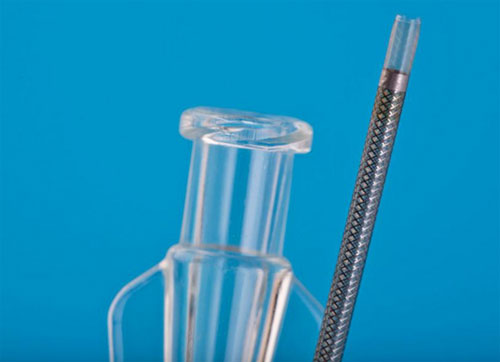Key Considerations for Designing Neurovascular Microcatheters
The increasing move to minimally invasive surgical procedures has motivated medical tubing and extrusion experts to test the boundaries of miniaturization.
December 12, 2014

|
|
Significant technological progress, favorable reimbursement conditions, and the medical device industry's windfall—the massive army of aging baby boomers—will spur the U.S. neurovascular market to exceed $600 million by 2020, according to market research firm iData Research.
And a critical driver of growth in this sector has been the various advancements in microcatheter design and development. "Almost every device placement or therapy taking place in or above the neck will require a microcatheter to support the intervention," comments Steven W. Berhow, president of Rogers, MN-based Biomerics Advanced Catheter.
The increasing move to minimally invasive surgical procedures has motivated medical tubing and extrusion experts to test the boundaries of miniaturization. Specialists have sought to strike a delicate balance in terms of achieving the smallest possible outside diameter for a catheter without compromising performance characteristics for a given application.
Designing microcatheters for neurovascular interventions takes these demanding requirements a step further, however. Beyond shrinking profiles, these microcatheters pose additional challenges because they must be able to carefully navigate the winding, delicate anatomy of the tiny blood vessels that run through the head and neck.
"Devices used in the neurospace require microcatheters that can transverse very tortuous anatomies while maintaining pushabilitiy and the lumen itself," Berhow says. "The design must have characteristics constructed into the shaft and tip that allow the microcatheter to reach its intended work site and deliver the therapy without damaging the vessels it is moving through."
To this end, microcatheters must possess the following traits, according to Berhow:
Good torque within the shaft from the proximal to the distal end
Flexibility in the distal portion of the catheter
Kink resistance
Visibility under fluoroscopy
Low stretch
High pressure
Good guidewire movement
"These devices tend to be high-end catheters that are very complicated to design and manufacture," Berhow says. "Microcatheters are designed with very small walls, thin lubricious liners, high counts of reinforced braid, antikink characteristics, and they need to maintain visibility under fluoroscopy."
—Shana Leonard, group editorial director, medical content
[email protected]
[Image courtesy Biomerics Advanced Catheter]
You May Also Like

